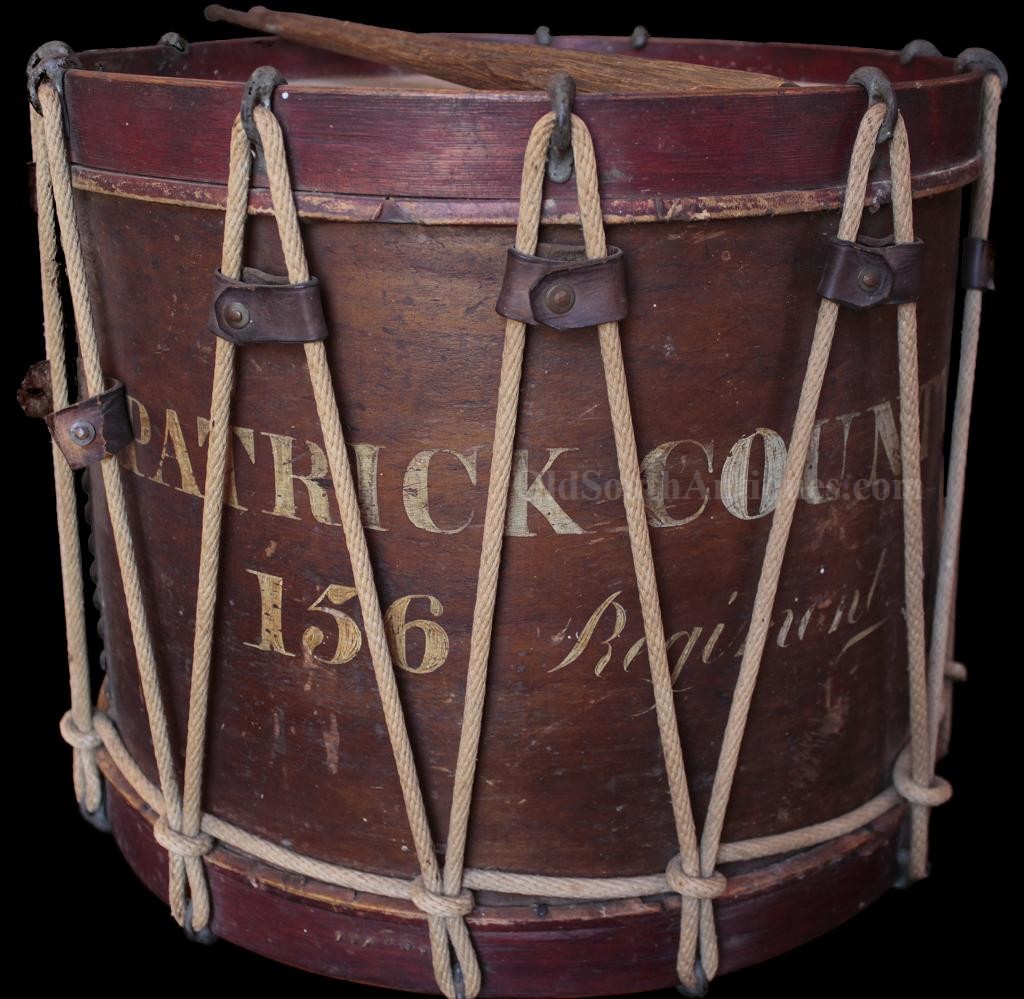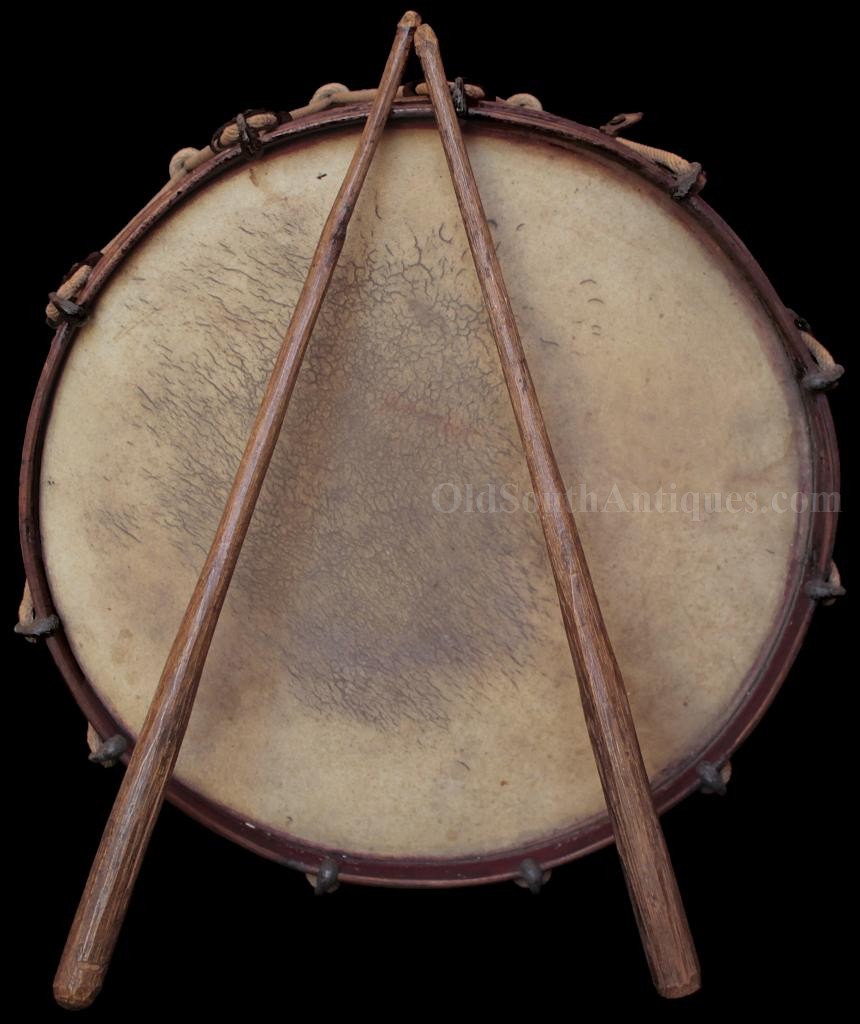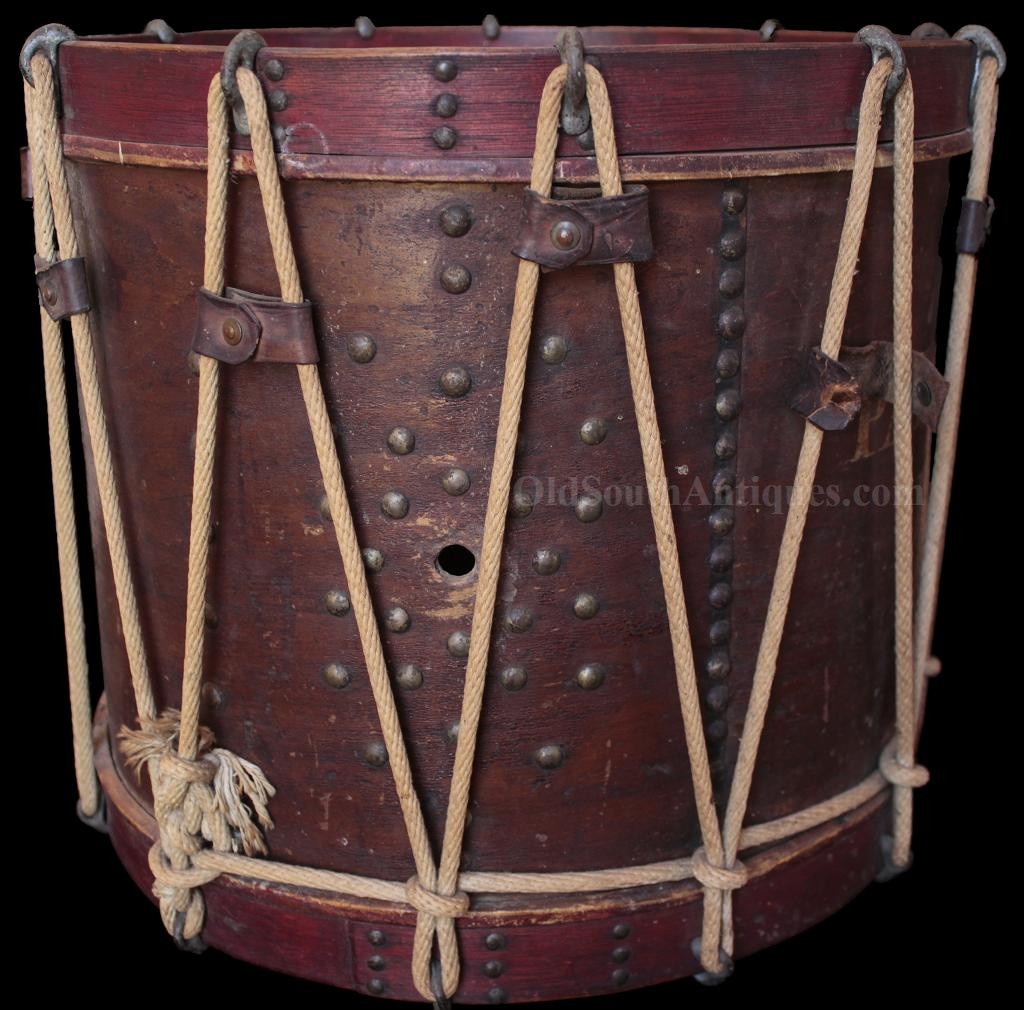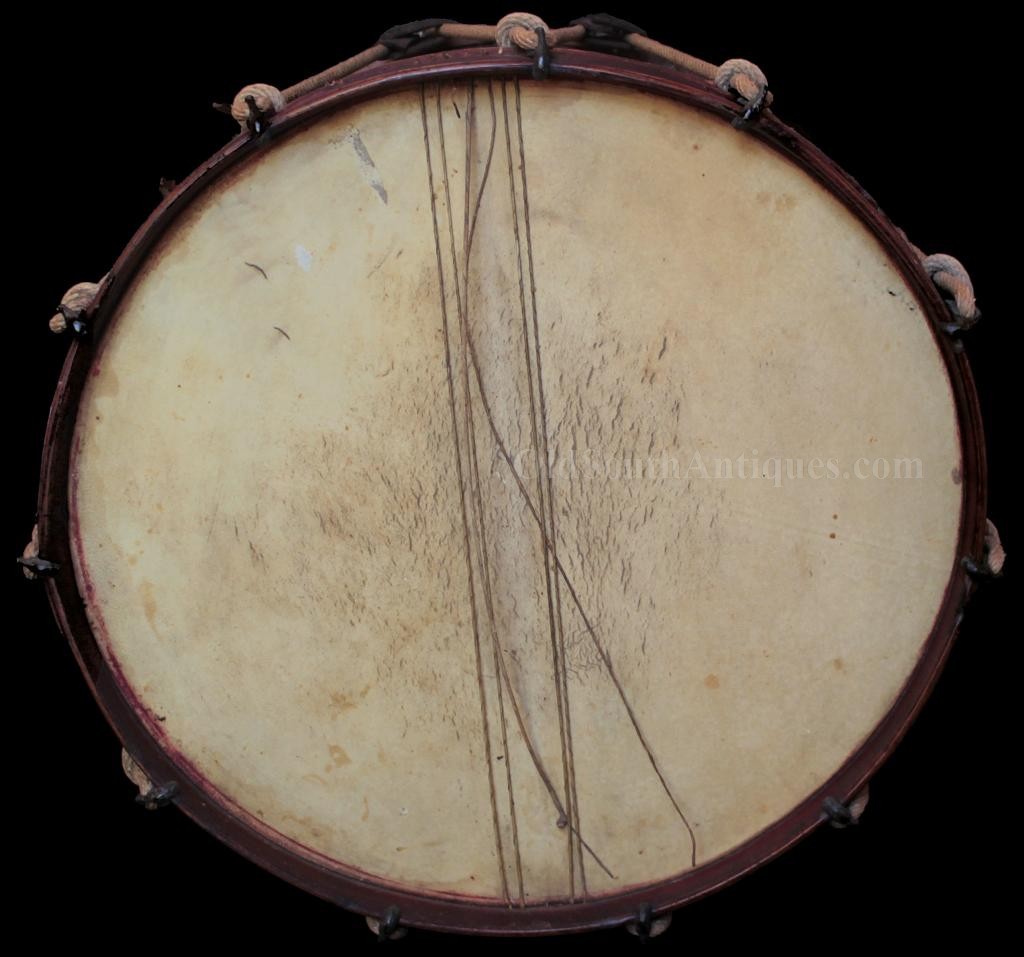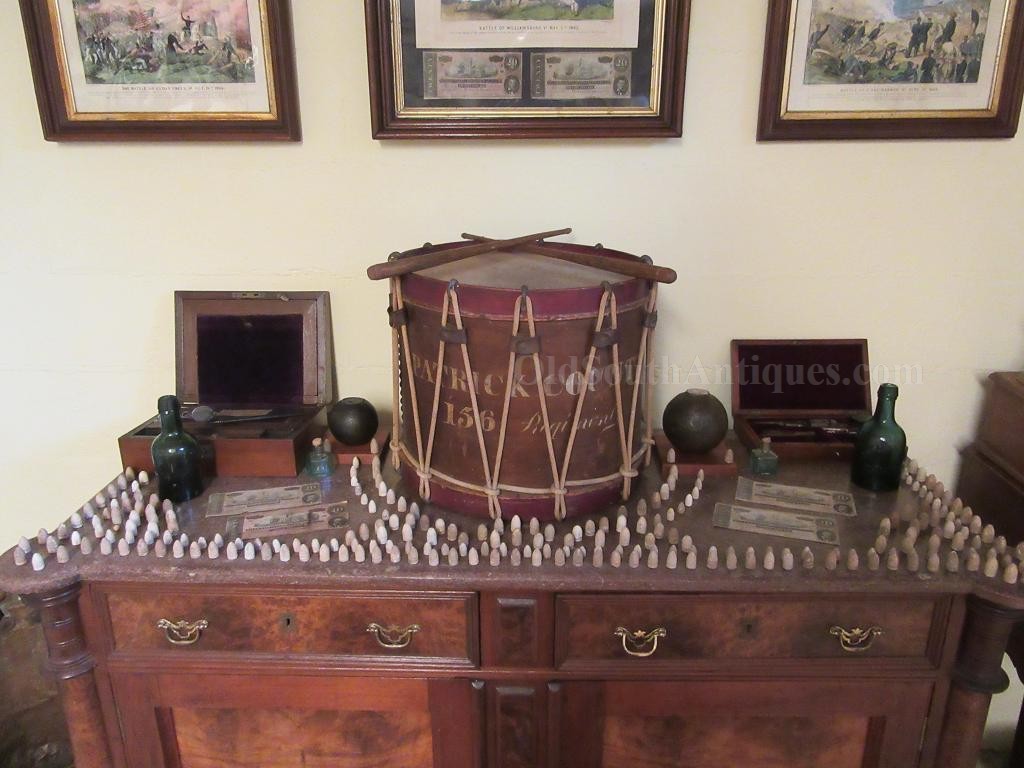
| Catalog | Past Items | Order Info | Terms/Conditions | About Us | Inventory Clearance |
Drummers are often thought of merely as military band members intended to entertain the troops, but they actually served a critical purpose on the battlefield. In the antebellum period drums were used both in camp and on the battlefield to convey orders. The drummers were required to learn dozens of drum calls, and the playing of each call would relay a different order to the soldiers.
In battle, drums were used to provide inspiration to soldiers, as well as communicate orders and direction to troops. Aware of the impact that patriotic music could have, officers often ordered their musicians to strike up a patriotic song to bolster the spirits and courage of their soldiers during battle. In perhaps the most famous instance, General George Pickett’s men stepped off on their fateful charge at Gettysburg to "The Bonnie Blue Flag.”
This continued from the beginning to the end of the War. At Dinwiddie Courthouse on March 31, 1865, Yankee war criminal Phillip Sheridan ordered his musicians to stand directly behind his men and play patriotic music. One band continually played "Hail Columbia” for the duration of General Fitzhugh Lee’s Confederate assaults. General Lee ordered his bands to play patriotic Southern airs such as "Dixie” and "The Bonnie Blue Flag” for the assaulting soldiers.
On the long and weary march, the drummer gave life to the fatigued men, as Confederate drummer boy Delavan Miller later wrote "for a marching column ther [sic] is nothing like martial music of the good old fashioned kind.”
Drummers were often depicted by Civil War battlefield artists and by photographers. Battlefield artists, who accompanied the armies and made sketches which were used as the basis for artwork in illustrated newspapers, commonly included drummers in their work. The great American artist Winslow Homer, who had covered the war as a sketch artist, placed a drummer in his classic painting "Drum and Bugle Corps."
The military drum shown here is painted "PATRICK COUNTY 156 Regiment” It was manufactured by Edward Baack, 87 Fulton Street, New York. Baack had come to New York in 1840, and is listed in Directory of American Military Goods makers 1775-1950 as having sold all types of musical instruments from his store at 87 Fulton Street. New York in 1851 and 1852. He was no longer listed in the 1860 directory, but kept up clandestine sales, as the same directory notes that he was
"Rumored to have gotten wealthy selling bugles to CS army”
This drum was purchased from him prior to the War Between the States by the 156th Virginia Regiment. I can find no record of the 156thVirginia Regiment prior to 1860. A guide to Virgina Military Organizations 1861-1865 lists the 156 Regiment of Virginia Volunteers from Patrick County as being in the 12th Brigade, Virginia Volunteers under Brigadier General Peter Hairston in 1860, and Brigadier General Hughes Dillard in the first part of 1861, and then under Lee’s ‘bad old man” Brigadier General Jubal A. Early.
Early voted against secession during the
Virginia secession Convention in April 1861, but after Virginia seceded from
the Union in May 1861, Early was appointed a general in the state militia. On
May 6th, 1861, Early was ordered to take charge of Virginia troops being formed
as units at the hurriedly improvised Lynchburg training camp; among these, his
old unit, the 156th Regiment from Patrick County.
There Early formed five regiments of infantry and one of cavalry using men from counties in the Lynchburg region. Early, who had extensive military experience, was made Colonel of the 24th Virginia Infantry Regiment. He brought with him to the 24th Virginia, Peter Hairston of the 156th Regiment, as well as the men from Patrick County which became Company I, 24th Virginia Infantry.
The regiment served under Early at First Manassas, then was assigned to Early's, Kemper's, and W.R. Terry's Brigade, Army of Northern Virginia, where it fought in the campaigns of the Army of Northern Virginia, with the exception of when it was detached to Suffolk with Longstreet. Later it served at Petersburg and the Appomattox campaign.
Well-known old-time collector and military author Bill Ivey bought this out of an attic from a family in the Woolwine community, Patrick County, Virginia, circa 1975. At the time the family had a photograph of the regiment, including the ancestor, the drummer, with his drum, but he was unable to purchase the photograph.
The drum is completely original and unaltered, ropes, everything is just as it was found; it even has its original, rough hand carved drumsticks accompanying.
Copyright © 2024 OldSouthAntiques.com All Rights Reserved.
Privacy Policy | Terms of Use
Powered by Web-Cat Copyright © 1996-2024 GrayCat Systems
